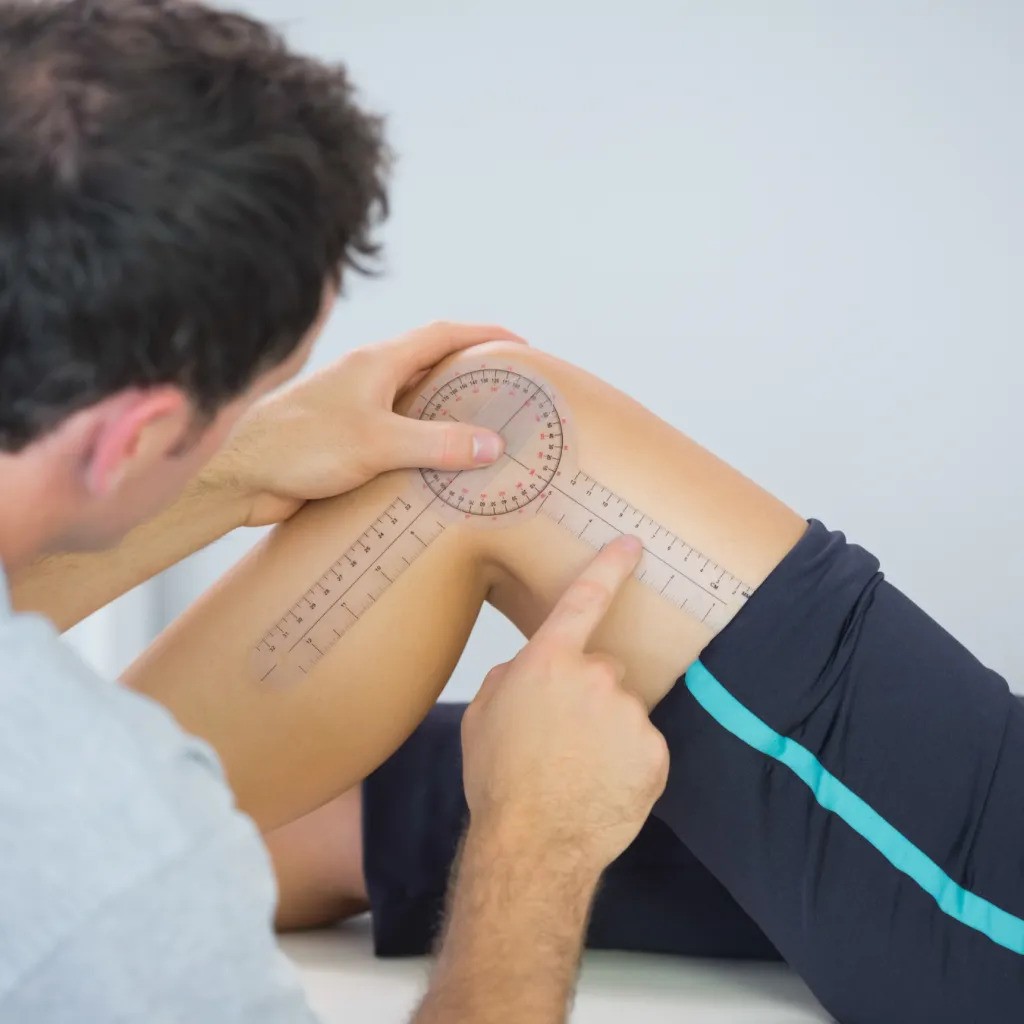Reduce Workplace Injuries: Effective Prevention Plans for Every Industry

Strong 8k brings an ultra-HD IPTV experience to your living room and your pocket.
Workplace injuries, whether minor or severe, can have a significant impact on an organization. They can lead to lost productivity, increased medical costs, worker compensation claims, and in some cases, irreversible harm to employees. More importantly, workplace injuries can hurt employee morale and, if not addressed properly, can even tarnish a company's reputation.
Employee injury prevention is crucial in creating a safe working environment, reducing risk, and ensuring that workers remain healthy and productive. Employee Injury Prevention Plans (EIPPs) are not only essential for protecting workers but also contribute to the overall success of the organization. In this article, we will explore the key elements of effective employee injury prevention plans and how they can be applied across various industries.
The Importance of Employee Injury Prevention
Before delving into how to prevent injuries, it's vital to understand why injury prevention matters. Each workplace faces unique risks, depending on the nature of the work. Construction sites, manufacturing plants, offices, retail stores, and healthcare facilities all have distinct hazards that need to be addressed. Regardless of the setting, workplace injuries can lead to:
Increased costs: Medical bills, workers' compensation, and legal fees related to workplace injuries can be expensive for organizations.
Loss of productivity: Injuries can result in workers missing days, causing delays in projects, production schedules, or customer service.
Decreased employee morale: Repeated accidents can create an atmosphere of fear or dissatisfaction, which may lead to higher turnover rates and lower employee engagement.
Legal and regulatory issues: In many countries, employers are legally obligated to provide a safe work environment. Failure to comply with safety regulations can lead to costly fines and legal consequences.
Reputational damage: Companies that are known for having unsafe work environments may find it difficult to attract new employees or retain top talent.
By creating and implementing effective injury prevention plans, organizations can protect their employees and reduce the likelihood of these negative consequences.
Key Components of Employee Injury Prevention Plans
Creating a comprehensive Employee Injury Prevention Plan involves multiple strategies that address potential risks in the workplace. The key components of an effective injury prevention plan are:
Risk Assessment and Hazard Identification
The first step in any injury prevention plan is conducting a thorough risk assessment. This involves identifying hazards that could lead to injuries, both immediate and long-term. Risk assessments should consider the following:
Physical hazards: Machinery, electrical hazards, heavy lifting, slips, and falls.
Chemical hazards: Exposure to harmful chemicals, toxins, or fumes.
Ergonomic hazards: Repetitive motions, improper workstation setups, or awkward body positions.
Psychosocial hazards: Stress, harassment, or overwork.
By identifying potential hazards, employers can take proactive steps to mitigate the risks before accidents occur.
Employee Training and Education
Employee training is critical in injury prevention. Workers should be educated on the specific hazards they might encounter in their roles and how to avoid them. Effective training programs should:
Teach employees how to recognize hazards.
Educate them about safe work practices and how to handle equipment properly.
Provide knowledge on how to report unsafe conditions.
Emphasize the importance of using personal protective equipment (PPE), if required.
Focus on ergonomics to reduce strain and repetitive motion injuries.
Regular training sessions should be conducted to reinforce safety protocols and to ensure new employees are adequately trained. Additionally, employees should feel empowered to stop work if they believe safety is compromised.
Clear Safety Policies and Procedures
A well-defined set of safety policies and procedures is essential in any injury prevention plan. Employees should have clear guidelines on what to do in case of an emergency, how to report hazards, and who to contact for safety concerns. The safety policies should cover:
Emergency procedures: Clear instructions on evacuation plans, first aid, and who to contact in case of emergencies.
Reporting procedures: How employees should report near-misses or unsafe conditions. This could involve safety audits or a suggestion box for employees to submit concerns.
Personal protective equipment: A policy should specify which PPE is required for each task and ensure that employees are properly trained to use it.
Having a comprehensive set of policies helps employees understand their role in maintaining a safe environment and ensures that the organization complies with health and safety regulations.
Regular Safety Inspections and Audits
A successful Employee Injury Prevention Plan involves ongoing evaluation and monitoring. Safety inspections and audits should be conducted regularly to identify new risks or hazards that may have emerged. These audits may involve:
Walk-through inspections of the workplace to identify physical hazards like spills, equipment malfunctions, or unsafe work conditions.
Employee feedback surveys to gather input on safety concerns that may not be immediately visible.
Tool and equipment checks to ensure that everything is functioning properly and safely.
Safety inspections can also involve assessing employee compliance with safety procedures. For instance, ensuring that employees are using the appropriate PPE, following proper lifting techniques, or practicing safe equipment handling.
Promoting a Culture of Safety
Injury prevention goes beyond policies and procedures—it’s about fostering a culture where safety is ingrained in the company’s values. A safety culture encourages:
Open communication: Encourage employees to speak up about safety concerns without fear of reprisal.
Involvement of all levels of staff: Safety isn’t just the responsibility of managers—it should be a shared responsibility between employees, supervisors, and leadership.
Employee engagement: Motivating employees to take ownership of safety within their teams. Recognizing and rewarding safe behaviors can reinforce a safety-first attitude.
Post-Incident Review and Corrective Action
Even with the best preventative measures, injuries may still occur. In such cases, it’s important to review the incident and take corrective action to prevent future occurrences. Post-incident reviews should:
Investigate the cause of the incident: Determine whether it was a result of human error, equipment failure, or a breakdown in procedures.
Develop a corrective action plan: Modify safety procedures, provide additional training, or improve equipment.
Track outcomes: Monitor the effectiveness of corrective actions to ensure that the risk of similar incidents is reduced.
Adapting Injury Prevention Plans Across Different Industries
The approach to injury prevention will vary depending on the type of work and the environment. Here's how Employee Injury Prevention Plans can be tailored for different industries:
Construction and Manufacturing In these high-risk industries, physical hazards such as machinery, tools, heavy lifting, and fall risks are prevalent. Key components of injury prevention include providing workers with proper training on equipment, regular inspection of tools and machinery, implementing fall protection systems, and ensuring employees use PPE such as helmets, gloves, and harnesses.
Healthcare Healthcare workers face unique risks such as exposure to infectious diseases, physical strain from lifting patients, and needle-stick injuries. Prevention strategies include training in proper lifting techniques, providing needle-stick safety devices, ensuring regular sanitation practices, and encouraging the use of PPE like gloves, masks, and face shields.
Office Environments Although offices may seem safer, ergonomic injuries from prolonged sitting, poor posture, or repetitive motion are common. Injury prevention plans should focus on ergonomics—providing adjustable chairs, sit-stand desks, and teaching proper posture. Mental health support is also crucial in preventing workplace stress.
Retail Retail workers face risks from lifting, repetitive tasks, and slip-and-fall accidents. Effective injury prevention includes training on proper lifting techniques, maintaining clean floors to avoid spills, ensuring workers take regular breaks, and preventing repetitive strain injuries by varying tasks.
Conclusion
Workplace injuries are preventable with the right approach. Implementing a comprehensive Employee Injury Prevention Plan not only protects employees but also ensures the company runs smoothly and complies with safety regulations. By assessing risks, providing training, setting clear policies, and continuously monitoring safety measures, companies can reduce workplace injuries, improve productivity, and foster a healthier work environment. Whether in construction, healthcare, office settings, or retail, injury prevention plans are an investment in both the workforce and the organization’s long-term success.
Note: IndiBlogHub features both user-submitted and editorial content. We do not verify third-party contributions. Read our Disclaimer and Privacy Policyfor details.


